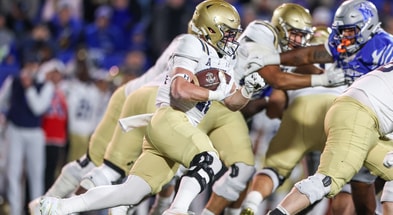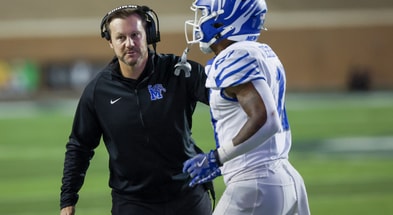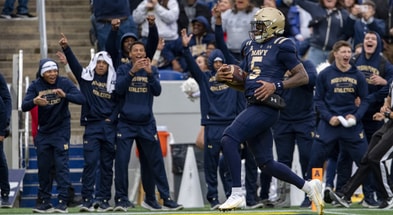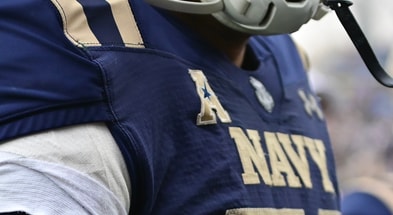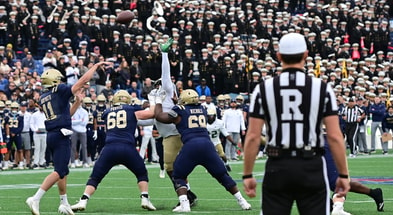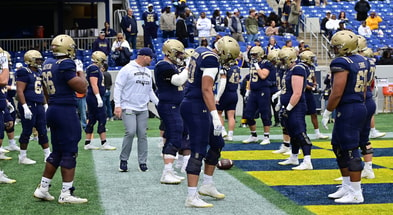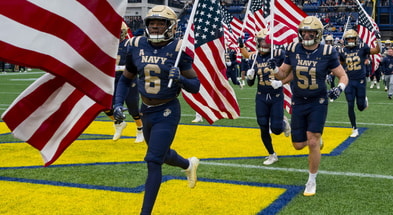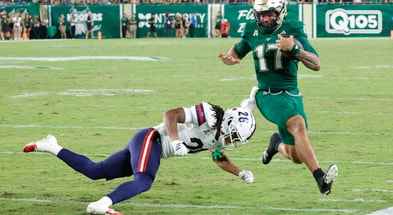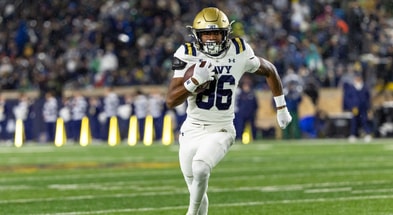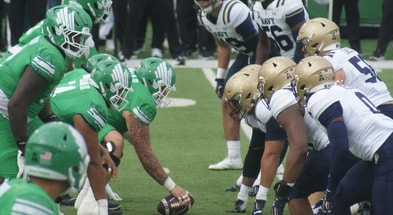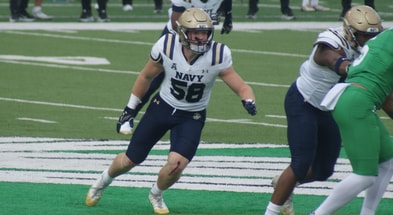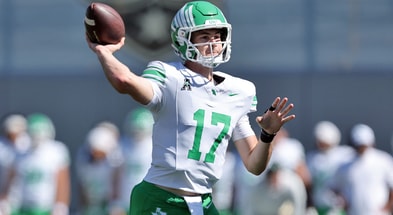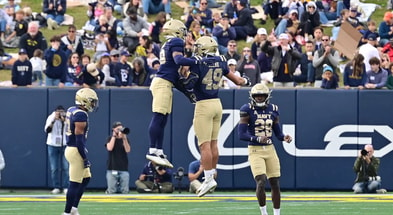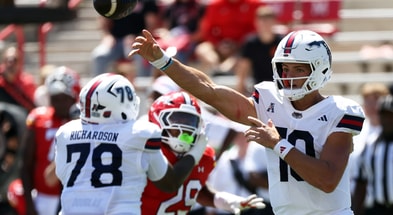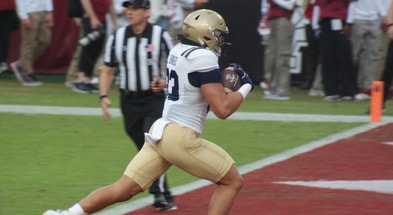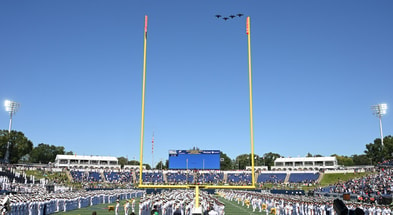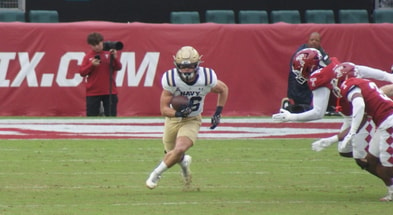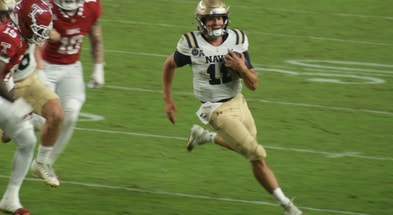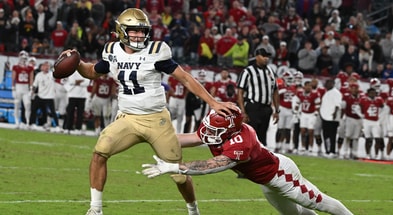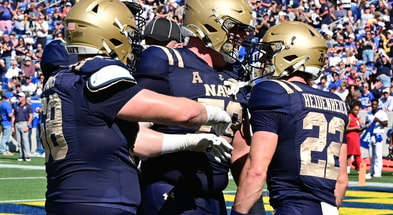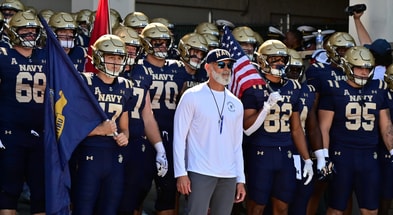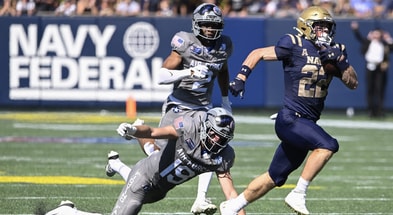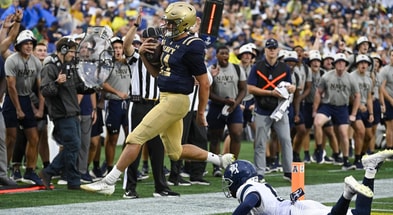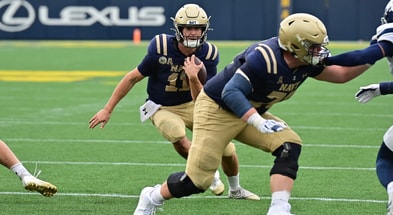The Temple Preview
When Navy football elected to leave the ranks of the independents and embrace conference membership, I was a vocal supporter of the decision. I had been an advocate for independence once upon a time, but it wasn’t because I thought independence was some grand tradition. I just felt at the time that it made the best strategic sense for Navy. But college football was changing, and it wasn’t hard to see where things were headed. The strategy had to change along with it. A decade later, it’s clear that joining a conference was the right decision.
Still, there were tradeoffs. At the time of the decision, a common point made by critics was that joining a conference would basically lock in the schedule every year. Some fans liked Navy having the ability to schedule new and unusual matchups. At the time, I understood the concern, even if I didn’t find it compelling.
Today, I don’t even think it’s a tradeoff.
I don’t crave the new and unusual. The more things change in college football, the more I value the things that stay the same. I want the games I grew up with. Watching USC playing conference games against Iowa and Purdue just makes me wish they were playing Stanford and Cal instead. I despise the corporatization of college football. I like traditions, bowl games, regional rivalries, and everything else that makes the sport quirky.
Along those lines, I like Navy playing Temple.
I’m not going to pretend that Navy-Temple is a rivalry; when you already make up one half of the gold standard of rivalries, nothing else feels like it fits the definition. Even if nobody calls this game a rivalry, though, it has many of the characteristics of one. Navy and Temple are each other’s permanent scheduling partner in the American. Of all Navy’s conference opponents, only Tulane has faced them more times; I remember Navy playing Temple when I was a mid. The series has had memorable moments, too, with the 2008 miracle Navy comeback and the heartbreak of the 2016 conference championship game. The series is tied 5-5 over their last ten matchups. More than half of the games between these two teams have been decided by one score.
I would be disappointed if Temple wasn’t on Navy’s schedule. There’s no reason to call this series a rivalry, yet for some reason, it plays out like one. And it might do so again this year.
That conference championship in 2016 is the high-water mark of Temple’s football history. The program has been limping along since then, with four straight 3-9 seasons since 2021. But under the leadership of new head coach K.C. Keeler, they’ve already reached that win total this season. They are firmly in the hunt for a bowl game, and with a win over Navy, they could set their sights even higher.
It’s an impressive start for the Owls, especially considering their history. The farther we get from the Al Golden and Matt Rhule years, the more impressive those coaches’ accomplishments at Temple seem. They were able to recruit and retain talent in a way that no coach, before or since, has replicated. Temple never came close to a winning record in the old Big East, in part because it was so difficult to recruit there. Bobby Wallace, the Owls’ head coach over the last seven years of their Big East run, became heavily dependent on junior college transfers. He brought in some talented players; there was a time when Temple was a factory for NFL offensive linemen. But these were two or three bright spots per year on an otherwise unsettled roster. The Owls never won more than two conference games in Wallace’s tenure.
The NIL and portal era have only made things worse. Retaining talent was also a sore spot for former head coach Stan Drayton. When he brought his team to Annapolis last year, they only had 58 returning players on the roster, the second-fewest in all of FBS. He had to find ways to patch those roster holes. Between JUCO transfers, the portal, and new recruits, Temple had 43 new scholarship players, which was the fourth-most in FBS.
That’s not a recipe for winning when your NIL budget is dwarfed by conference rivals like Memphis, Tulane, and USF. When Temple was at its best under Rhule, they were a developmental program. In Rhule’s last two seasons in Philadelphia, the Owls had back-to-back ten-win seasons, finished in the top 25 both years, and won the conference in 2016. They did it with guys like Quincy Roche and Tyler Matakevich— unheralded recruits developed into all-American-caliber players. If Temple isn’t going to match their conference peers dollar-wise, that’s the formula they need for success. And that’s the task facing Keeler today.
Temple’s hiring of Keeler was a head-turner to those who pay attention. Temple is on their eighth head coach in the last 20 years, and whenever they went looking for a new one, Keeler’s name would get mentioned. He’s a Pennsylvania native who spent nine years as the head coach of Division III Rowan in New Jersey before taking over at Delaware in 2002. In 2014, he was named head coach of then-FCS program Sam Houston State, and he led the Bearkats through their transition to FBS. In Keeler’s 29 seasons at the Division III and FCS levels, he led his teams to the postseason 17 times, with nine semifinal appearances and two national championships. After SHSU transitioned to FBS, Keeler had them in a bowl game by year two. It’s a wonder why another FBS program didn’t hire him years ago.
And that may be why he took the Temple job now. Keeler is 66 years old. Maybe Temple wasn’t a job that appealed to him 20 years ago, but today, it’s probably now or never. Whatever his reasons for taking the job, there’s no question that Temple hired a proven winner. If you need someone to establish a strong culture to retain and develop players, it’s hard to imagine a coach more suited to the task than Keeler.
Indeed, the hire is already yielding results on the field. Temple is 3-2 after five games, already matching their win total of the last four years. You could argue that the schedule has helped in that regard, with winnable games against UMass and Howard leading things off before powerhouse matchups against Oklahoma and Georgia Tech. Winning the games you’re supposed to win is commendable, but in this case, it was predictable. Last week’s win over UTSA, however, was not.
The Owls went into halftime of that game with a 14-3 deficit, but came out of the locker room on fire. Temple scored 21 points in the third quarter, sparked by an interception and big plays by tight end Peter Clarke. The Owls took a 24-21 lead, then added a field goal in the fourth quarter to clinch a 27-21 victory.
This was not a game that Temple was supposed to win. UTSA had been considered by some to be a dark horse contender in the American; both Athlon and Phil Steele ranked the Roadrunners in their preseason top four. They had an experienced quarterback and the leading rusher in all of college football at the time, Robert Henry. Henry had 177 yards against Texas A&M, but against Temple, he only had 12 carries for 43 yards. To put the game in perspective, UTSA scored 51 on the Owls a year ago, with Henry putting up 178 on the ground. Behold, the Keeler Effect.
So how have they done it? Offensive coordinator Tyler Walker had the top offense in FCS at Montana State in 2024, but his numbers so far this year have been far more modest. That doesn’t mean they’re bad, though. The Owls are 96th in total offense at 353 yards per game. They average 30.2 points per game, which is 60th. Their 171 rushing yards per game are 57th. None of these numbers jump off the page, but they are all considerable improvements from Temple’s 2024 production. They’re also a little misleading. Take away the OU and Georgia Tech games, and the numbers look a whole lot better. Against everyone else, Temple averages 445 total yards, 216 rushing yards, and 41.3 points per game. Those are eye-catching, and probably more representative of what the Owls are capable of in conference play.
Schematically, Temple is a run-first team, and the Owls have a pair of capable running backs. Jay Ducker leads the team in rushing with 349 yards. He faced Navy before when he was Memphis’ leading rusher in 2022 before transferring to Sam Houston State. He’s joined in the backfield by Hunter Smith, a transfer from ULM who is averaging 7.7 yards per carry. Quarterback Evan Simon has also been more involved in the run game the past two weeks, with 20 carries for 92 yards in those games.
Simon doesn’t have the most accurate arm; he’s completing only 58.6% of his throws, and only 48.6% on anything farther than 10 yards downfield. Still, his passer rating is 150.98, which is very good– second in the conference, and higher than guys like John Mateer and Chandler Morris. This is due mostly to his 12:0 touchdown-to-interception ratio. When Simon throws deep, either his receiver will catch it or nobody will.
That makes this an interesting matchup for the Navy defense. In some ways, Temple operates like a service academy. They’re a run-first offense that’s 20th in the country in time of possession. They don’t beat themselves with turnovers (none so far this year). The coaches don’t ask their players to do anything they can’t handle. They just strive to be efficient in what they can handle.
There are some underlying numbers that might hint at how the Mids will approach this. Simon has interesting stats when it comes to pressure. His numbers are almost identical when he’s blitzed vs. when defenses don’t blitz against him, both in terms of completion percentage and yards per attempt. However, when he throws under pressure, he completes only 35.3% of those passes. When there is no pressure, he’s completing 68% of his passes. That’s a pretty wide swing, and it tells me that the defensive line will be critical to stopping him. Finding a way to generate pressure without bringing extra pass rushers is a priority for the Mids this week.
On the other side of the ball, Temple’s defense is led by a familiar face. Coordinator Brian L. Smith had the same job last year at Rice, where his defense limited the Mids to 10 points and 260 total yards. On his Zoom call this week, Brian Newberry described Smith’s new team as “Rice on steroids,” hinting at the challenge they’ll present to the Navy offense. Indeed, outside of the OU and Georgia Tech games, Temple has limited opposing offenses to 85 rushing yards per game.
Before this year’s Rice game, we talked about what made that defense so effective last year. A lot of it was due to solid defensive line play, and Temple has a solid defensive tackle in Demerick Morris. The fifth-year senior is 6-3, 305, and had five tackles against Navy a year ago. Cam’Ron Stewart is another redshirt senior who started at defensive end against Navy last year and had a career-high six tackles. He ranks second in the American Conference in TFLs and is tied for second in sacks. If Smith wants to lean on the line to lead his defense vs. Navy once again, he has players he can count on.
Something else that Smith did against Navy was mix up his coverage in the passing game. Rice had played Army earlier in the season, and used man coverage almost exclusively in that game. Navy’s first play against him was a wheel-post pattern, which is great against man coverage because it usually leaves a linebacker with a bad angle trying to chase down a snipe running up the sideline. And that’s what happened here. The problem for Navy is that Rice’s safeties weren’t playing man this time. It was man coverage underneath, but the safeties were in a two-deep zone. The post pattern didn’t draw the safety away, making it easy for him to make a play on the ball.
If that was the extent of the Rice game plan, it would have been easier to deal with. What made them unusual is that they mixed up their coverages. On the first play, they had two deep safeties. Sometimes they only used one. Here’s a play from Navy’s second drive, when the Mids ran Eli Heidenreich on a fake jet sweep to the flat. Against two-deep man coverage, this is a great play. The snipe should beat his man to the perimeter and have plenty of grass in front of him if he can turn upfield. But that’s not what happened. The cornerback followed the wide receiver, but the safety on the play side didn’t give him deep help. Instead, he was the robber in a cover 1. After Heidenreich caught the pass, he was met immediately.
It isn’t unprecedented to change coverage like that against Navy, but most teams don’t. It’s worth mentioning because Navy is coming off of a historic passing performance last week. Air Force used man coverage almost exclusively, but that doesn’t mean Temple will. It will be harder for the Mids to go all-in on the passing game this week.
It may also be worth taking a closer look at Temple’s game against Georgia Tech to see what they will do on Saturday. While they don’t do exactly what Navy does offensively, the Yellow Jackets have similar looks and an outstanding running quarterback in Haynes King. The Owls gave up 307 rushing yards that day, although 61 of those came on the last play. Of Tech’s remaining 246 rushing yards, 206 came on only eight plays. On everything else, they had 21 carries for 40 yards.
What does this mean for Navy? This is similar to what happened to the Mids last week. Against Air Force, the Mids could bail themselves out with the passing game. Can they do the same at Temple? I don’t know. This also makes Alex Tecza‘s availability a big question. Without him, can the Mids find the consistency to rush for 4-5 yards per play instead of 2 yards? Again, I don’t know.
On the other hand, the big plays did happen. If Navy can create enough eye candy to get Temple’s defense looking the wrong way, they may be able to generate some big plays of their own. Of course, Georgia Tech is a top 15 team, so I’m sure they had some physical advantages against Temple. But eye discipline is universal, and testing it is Drew Cronic‘s specialty. The Mids will need to capitalize on every opportunity they get to hit the big one.
Temple is a ball-control team that runs the ball and doesn’t beat themselves. This is the kind of game that Navy has yet to play this year, even against Air Force. In a limited-possession game, every mistake is amplified. If Temple won’t make them, Navy has to match that precision.
Temple is a dangerous team with a lot to play for; a win over Navy would make them a player in the conference race. As fun as the win over Air Force was, it was only the first of many goals the Mids have for the season. If they want to meet those goals, they’ll have to put that win behind them and refocus on the present.
